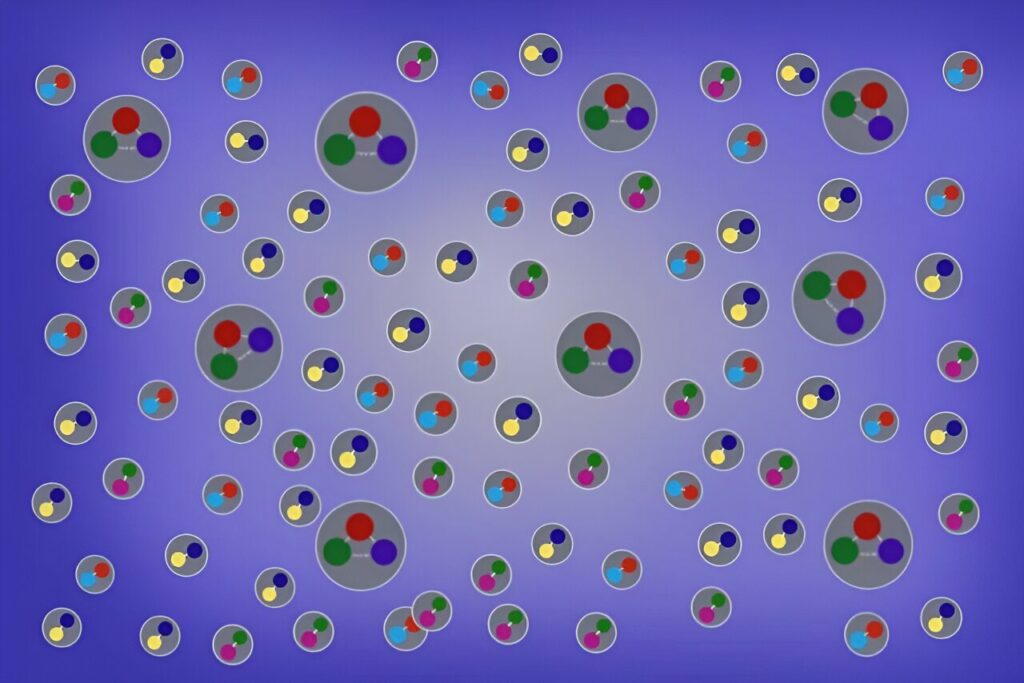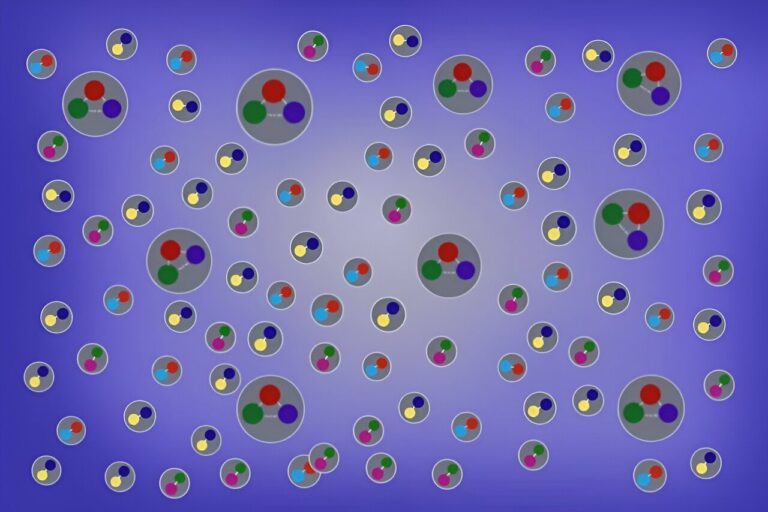“What Mechanisms Govern the Transition of Quark-Gluon Plasma Fireballs into Hadron Explosions?”
Quark-gluon plasma (QGP) represents a captivating phase of matter generated in laboratory settings through the collision of two heavy nuclei. This collision gives rise to a QGP fireball, which undergoes expansion and cooling in accordance with the principles of hydrodynamics, dictating the behavior of fluids under different conditions.
Over time, subatomic particles such as protons, pions, and other hadrons (particles composed of two or more quarks) gradually emerge and are detected and quantified by sensors positioned around the collision site.

Fluctuations in the abundance of these particles from collision to collision carry crucial information about the quark-gluon plasma (QGP). However, extracting this information from observable data poses a challenging task for scientists. An approach known as the maximum entropy principle plays a pivotal role in establishing a connection between experimental observations and the hydrodynamics of the QGP fireball, as detailed in the journal Physical Review Letters. As the QGP fireball undergoes expansion and cooling, it eventually reaches a state where it becomes too diluted to be accurately described by hydrodynamics.
This marks the point of “hadronization,” wherein the QGP transitions, and its energy and quantum properties are carried by hadrons—subatomic particles like protons, neutrons, and pions composed of quarks. The hadrons undergo “freeze out,” effectively preserving information about the final hydrodynamic state of the QGP fireball. Subsequently, these particles carry this preserved information to the detectors in an experiment. The research introduces a tool for utilizing simulations to compute observable fluctuations in the QGP, enabling researchers from the University of Illinois, Chicago, to employ freeze-out as a means to detect indications of a critical point between a QGP fireball and a gaseous hadronized state. This critical point remains one of the unresolved questions in quantum chromodynamics, the theory governing the strong gluon-driven interactions between quarks.
Fluctuations within the quark-gluon plasma (QGP) are carriers of information regarding the region of the Quantum Chromodynamics (QCD) phase diagram where collisions undergo “freeze out.” Establishing a connection between fluctuations in hydrodynamics and those observed in hadrons is a pivotal step in translating experimental measurements into a comprehensive map of the QCD phase diagram.
Notably, large event-by-event fluctuations serve as distinctive experimental signatures pointing towards the existence of a critical point. Data derived from the Run-I Beam Energy Scan (BES) program at the Relativistic Heavy-Ion Collider (RHIC) suggest the potential presence of this critical point. In response to this indication, researchers have introduced an innovative and universally applicable approach to transform hydrodynamic fluctuations into variations in hadron multiplicities.
This approach elegantly addresses challenges encountered in prior attempts to tackle this issue. Importantly, the new method, grounded in the maximum-entropy principle, preserves all the information pertaining to the fluctuations of conserved quantities described by hydrodynamics. The novel freeze-out procedure is poised to find applications in theoretical calculations related to event-by-event fluctuations and correlations observed in experiments such as the Beam Energy Scan program at RHIC, aimed at comprehensively mapping the QCD phase diagram.
This article is republished from PhysORG under a Creative Commons license. Read the original article.
Do not forget to share your opinion with us to provide you with the best posts !




0 Comments